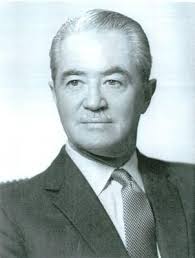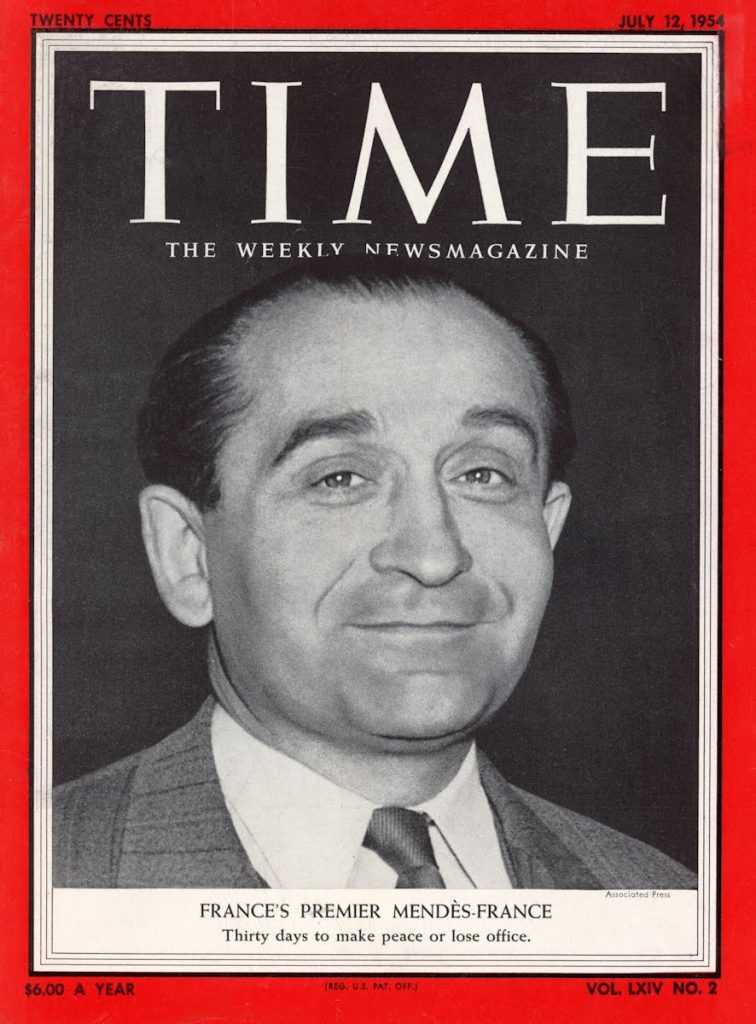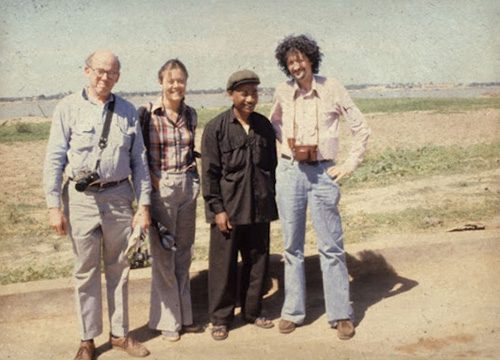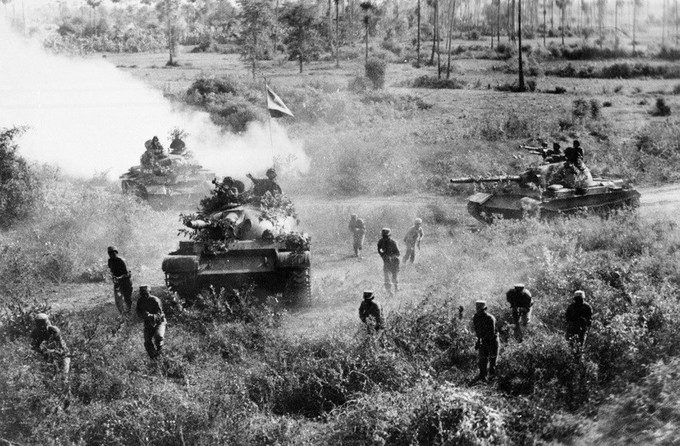On 19 December 1954, US Ambassador McClintock stated that the Cambodians had negotiated a secret agreement with the French calling for 720 French military instructors to be provided for the Cambodian Armed Forces during 1955.3 The Cambodians insisted on reservations which would permit Cambodia to decide, on a continuing basis, the number of instructors required and their nationality. This clause was apparently designed to meet the U.S. requirement for the gradual phase-out of the French as the King and the Prime Minister indicated agreement in the concept of replacing the French with U.S. military guidance.

During the tripartite discussions at Paris on 19 December 1954, Mendes-France informed Secretary Dulles that the French had a training mission of 500 officers in Cambodia and intended to keep them there. Further, Mendes-France stated that the French considered the presence of their military mission in Cambodia as being consistent with French defense policy.

On December 19, 1971, two U.S. Army helicopter pilots with the Air Cavalry Troop, 2nd Squadron, 11th Armored Cavalry, were assigned to survey the damage of some of these B-52 strikes in Cambodia, just southeast of Bambe, in Kampong Cham Province. 1st Lieutenant Peter C. Forame was in command of the OH-6 Cayuse scout helicopter they flew that day. Forame was 24 years old, from McLean, Virginia, just outside Washington, D.C. Sitting next to Forame was Warrant Officer Thomas W. Skiles from Buffalo, Wyoming. He was 22. As the two men swooped low in their aircraft over a clearing in the jungle, automatic weapons fire burst out of the canopy from multiple directions. The two men were flying without cover aircraft, and as Skiles pulled up to escape the area, their helicopter was peppered with .50-caliber machine gun rounds. Skiles immediately lost control, and the Cayuse burst into flames. Witnesses reported that the aircraft crashed at high speed into the tree line, traveling at least 100 miles per hour, and exploded on impact.
Despite the devastation of the crash, two rescue helicopters raced to the spot. They too were fired upon repeatedly as they attempted to look for survivors, and one of them was nearly shot down by a rocket propelled grenade. The following day, December 20, rescuers made a more concerted effort to find the crash site. Two rescue helicopters, with two AH-1 Cobras flying cover and fire suppression, arrived and found what was left of Forame and Skiles’s Cayuse. All that could be seen was a blackened patch of jungle and part of a tail boom. One helicopter’s crew reported seeing what they believed looked like human remains. But just as they did so, their helicopter was hit by machine gun fire too and they crashed into the jungle. Both crewmen survived, though one suffered severe wounds. Due to the heavy occupation of the area by Communist forces, no further attempts were made.
Peter Forame and Thomas Skiles were listed as missing in action and were transitioned to killed in action soon thereafter. Because the crash site was located deep in Cambodia, their remains were not recovered. In 1994 and again in 1999, American teams conducted extensive excavations of the crash site. Both excavations failed to locate any human remains, though they did find a few small personal effects, including Thomas Skiles’s military I.D. card. Both men remain unaccounted for, and are memorialized on Panel 2W, Line 89, of the Vietnam Veterans Memorial Wall in Washington, D.C.

On December 19, 2002, crowds of what the press described as nearly 1 million people joined a procession that brought relics from a stupa in front of the Phnom Penh railway station to their new home, an imposing new stupa on the hill near Oudong that already had several precolonial burial stupas of the royal family.
On December 21, 1947, parliamentary elections were held , and the Democratic Party maintained a majority of the seats in the National Assembly. Chhean Vom formed a government as prime minister on January 2, 1948.
On December 22, 2001, Sri Chinmoy of the International Peace Center presented Samdech Hun Sen with “Lifting Up the World with a Oneness-Heart” Award. It was presented in recognition of achievements scored by Samdech Hun Sen both in quantitative and qualitative terms. Sri Chinmoy refers to Samdech Hun Sen as an instrument selected by the Lord Buddha to save millions of people of Cambodia from deaths, to provide them with education, food and shelters, to build them schools, hospitals and water canals, and to lead Cambodia into ASEAN.
On December 23, 1954,The National Bank of Cambodia was established.
On December 23, 1978, Malcolm Caldwell, a British Marxist academic who supported the Khmer Rouge, was assassinated in Phnom Penh, hours after meeting Pol Pot.

On December 25, 1978, Vietnam launched an offensive to overthrow the Democratic Kampuchea regime with twelve to fourteen divisions and three Khmer regiments- a total invasion force comprising of between 100,000-150,000 men. Five spearheads were launched simultaneously, with Kampot province being attacked by forces stationed in Ha Tien.

Date unknown December: At the end of Prince Sihanouk’s 3-day state visit, Romania announces it will open an embassy in Phnom Penh. Before Sihanouk’s visit, Foreign Minister Ieng Sary ordered all Cambodian ambassadors back to PP, including Chea San, accredited ambassador to Romania. Chea San protested: “it would be disrespectful to Sihanouk”. Sary asserted: “the internal affairs of the new Cambodia are more important”. While Chea San was allowed to stay till after Sihanouk’s visit, he was one of the first diplomats to be executed by the Democratic Kampuchea regime.
